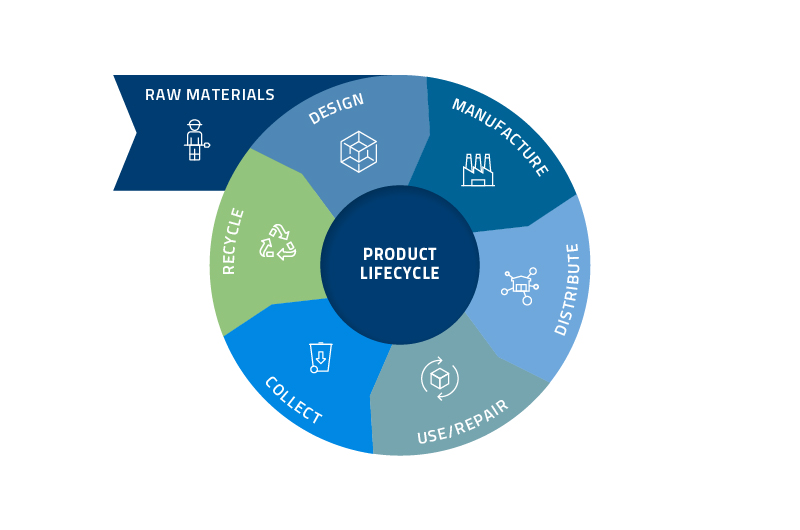In the effort to fight climate change, businesses are increasingly looking for ways to reduce their greenhouse gas (GHG) emissions. And a key part of this accountability involves measuring carbon footprints. However, carbon accounting can be complex, especially when delineating between corporate and product assessments. Understanding the nuances of each is essential for companies aiming to reduce their carbon emissions effectively.
CORPORATE CARBON FOOTPRINT ASSESSMENTS
A corporate carbon footprint assessment is defined as the total GHG emissions associated with the operations of a company. It includes emissions from all sources within the organization’s boundaries, such as facilities, transportation, and other operational activities. The corporate carbon footprint is typically broken down into three scopes. Scope 1 includes all direct emissions from company-owned and controlled resources. Scope 2 accounts for indirect emissions from the generation of purchased energy. Scope 3 (the most complex to measure) includes all other indirect emissions that occur in the company’s value chain.
PRODUCT CARBON FOOTPRINT ASSESSMENTS
In contrast, a product carbon footprint assessment focuses specifically on the GHG emissions associated with the production, distribution, and use of a company’s products. It may include all life cycle phases or only part of the life cycle. For instance, a product-level assessment for a smartphone would include emissions from obtaining raw materials, manufacturing the phone, the consumer’s usage of the phone, and the process of disposal or recycling.
The product carbon footprint assessment typically focuses on Scope 3 emissions, considering the entire life cycle of a product, reason why it is also more difficult to conduct. Calculating it is akin to a micro approach. It provides insights into which product life cycle is the most carbon-intensive stage (hotspots), thereby allowing companies to make targeted improvements.

THE INTERPLAY BETWEEN BOTH TYPES OF CARBON FOOTPRINT ASSESSMENTS
While both assessments serve the overarching goal of sustainability, they are used differently within a corporate strategy. Corporate carbon footprint assessments offer a bird’s-eye view of the company’s total GHG emissions, which is helpful in setting and tracking overall reduction targets and reporting to stakeholders and regulatory bodies.
On the other hand, product carbon footprint assessments can drive product-level decisions, such as redesigning products to be more efficient, choosing lower-impact materials, or improving the product’s end-of-life profile. It also helps companies to communicate with consumers, who are increasingly conscious of the environmental impact of their purchases.

DATA COLLECTION FOR CARBON EMISSION ASSESSMENT
Data collection is one of the key challenges to completing a carbon footprint assessment, particularly for products, rather than the company. The data used for a product carbon footprint assessment can be divided into two main categories:
- Primary Data (own company): physical data directly attributable to the specific product being investigated.
- Secondary data (outside company): proxies and assumptions, based on industry average data.
For companies starting on this journey, the key is to begin with what can be measured. Initial efforts can focus on direct emissions (Scope 1 and Scope 2) and then move toward the more complex areas of their supply chains and product life cycles.
As the ESG journey progresses, the process of measuring carbon footprints should become more granular, automated and scalable. Platforms, such as OPTEL’s end-to-end carbon tracking solution, are emerging to help businesses collect data, perform calculations, and report findings more accurately and efficiently. Here are a few of the ways Optchain can collect and connect data:
- Mobile/web applications (smartphone, tablet and/or computer)
- Enterprise software (MES, PLC, ERP, WMS, DRP)
- Uploading of Excel/CSV or Google files
- Integrations via APIs (EPCIS, EDI, Google)
- Integrations with IoT connected objects (GPS, RFID, NFC)
- Integrations with equipment on production lines (inspection point with vision systems)
- Integration with logistics partners
- Audits (supplier or process evaluation)

CONCLUSION
In summary, while corporate GHG emissions focus on the overall environmental impact of an organization, product GHG emissions specifically assess the emissions associated with the life cycle of individual products. Whether zooming out to grasp the full spectrum of corporate emissions or zooming in on a single product’s lifecycle, the clarity provided by these assessments is a powerful catalyst for change—a change that is not just good for the environment, but also for business resilience and growth.
Related POST

What Are Scope 3 Emissions?
“Scope 3 emissions are the result of activities from assets not owned or controlled by the reporting organization, but that the organization indirectly affects in its value chain” (EPA, 2023).

The EU’s Carbon Border Adjustment Mechanism (CBAM) Regulation
To counter carbon leakage, the EU officially published the Carbon Border Adjustment Mechanism (CBAM) on May 16, 2023. CBAM is a tariff imposed on imported goods based on their carbon footprints.

How to measure GHG emissions: A quickstart guide
Organizations may be uncertain about how to begin measuring their GHG emissions. Here are 6 steps on how to measure emissions and ensure compliance.
